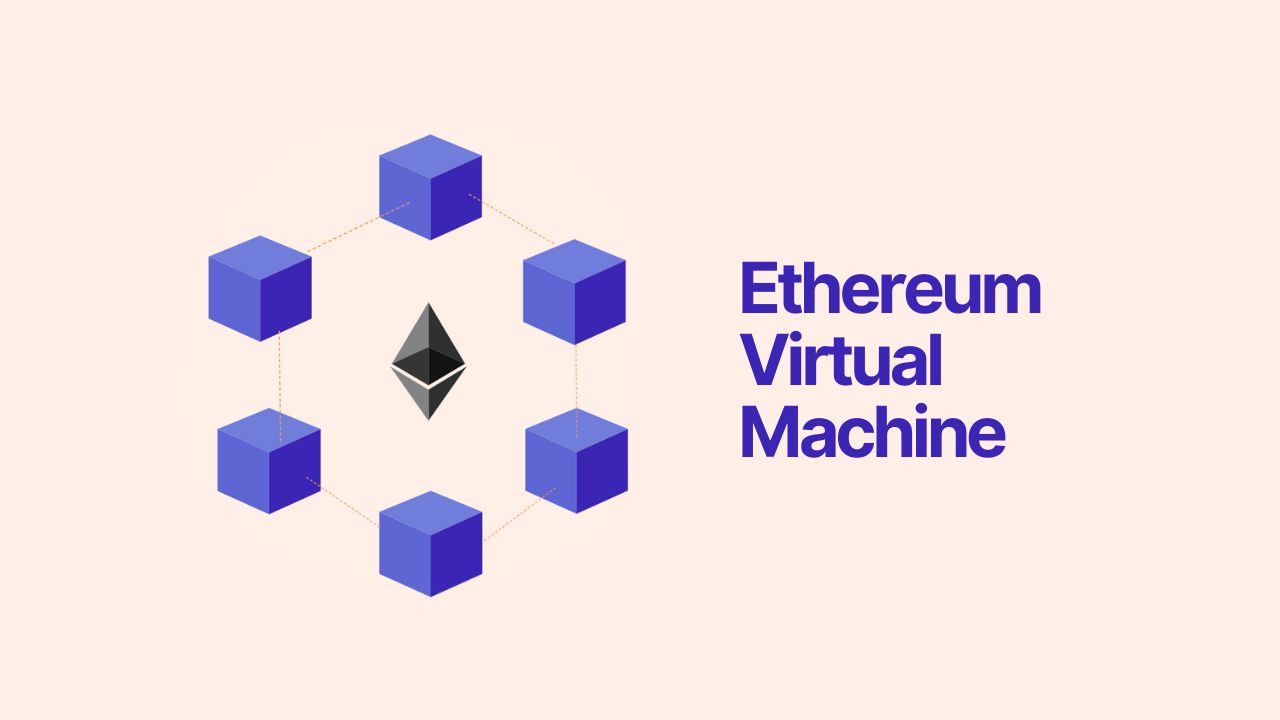The Ethereum Virtual Machine (EVM) is a platform for executing smart contracts on the Ethereum network. It operates as a decentralized virtual machine that securely and immutably processes and executes smart contract code. The EVM is essential for Ethereum’s functionality, enabling the creation of decentralized applications (DApps) and smart contracts that operate in a reliable and censorship-resistant environment.
The EVM is the cornerstone of Ethereum’s smart contract functionality. Conceived by Vitalik Buterin in 2015, the EVM is a Turing-complete virtual machine that executes code for smart contracts written in the Solidity language. Unlike other virtual machines, the EVM operates on a decentralized network of nodes, ensuring the immutability and security of operations.
Origins of the Ethereum Virtual Machine
The genesis of the Ethereum Virtual Machine can be traced back to the visionary mind of Vitalik Buterin, the creator of Ethereum. In 2013, Buterin proposed the idea of Ethereum, a blockchain platform beyond cryptocurrency transactions, intended to execute smart contracts. The EVM was conceived as a central component to enable this bold vision.
In 2015, with the launch of the Ethereum network, the EVM was introduced to the world as a Turing-complete virtual machine designed to execute smart contract code in a decentralized environment. This vision of providing a secure and immutable environment for smart contract execution marked the beginning of a new era in blockchain technology.
The EVM has undergone continuous improvements to address scalability and efficiency challenges. Various projects are currently underway to implement major updates, such as Ethereum 2.0, following the migration from proof of work (PoW) to proof of stake (PoS) consensus, thereby improving network speed and efficiency.

Operation of the Ethereum Virtual Machine
Architecture and Underlying Technologies
The EVM operates on a decentralized network of nodes, each running an instance of the virtual machine. The architecture of the EVM is based on Ethereum’s blockchain technology, which uses proof-of-work consensus to validate and add new blocks to the chain. Each node contains a complete copy of the blockchain’s history and, consequently, all executed smart contracts and transactions.
The Ethereum Virtual Machine (EVM) utilizes the well-known Ethereum virtual machine, which is Turing complete, meaning it can execute any program expressible in algorithmic terms. This provides developers with flexibility to create complex smart contracts. The virtual machine operates on bytecode, a set of low-level instructions generated by the Solidity compiler, the primary programming language for smart contracts on Ethereum.
Gas Principle and Execution Costs
One distinctive aspect of the EVM is the concept of “gas.” Every operation performed on the network, whether a simple transaction or the execution of a complex smart contract, incurs a cost in terms of gas. This mechanism serves to prevent resource abuse and ensures that network participants are rewarded for their computational contribution.
Users wishing to perform an action on the network, such as sending Ether or executing a smart contract, must specify an amount of gas and a price per unit of gas they are willing to pay. This approach creates a transparent and efficient market for executing operations on the Ethereum network.
Execution of Smart Contracts
When a user initiates a transaction involving the execution of a smart contract, the EVM comes into play. The transaction propagates through the network, and each node independently executes the logic of the smart contract to validate and reach consensus on the results. This decentralized process ensures that all nodes reach the same conclusion, providing integrity and security.
During execution, each operation within the smart contract consumes gas. The total gas cost is calculated by multiplying the amount of gas consumed by the price per unit of gas specified by the user. If the user has not provided sufficient Ether to cover the total gas cost, the transaction is reverted, ensuring that nodes are adequately compensated for their computational effort.
Virtual Machine and Decentralized Consensus
The EVM, being a decentralized virtual machine, operates on the principle of distributed consensus. Each node in the network executes the same operations and arrives at the same result for a given transaction. This consensus is achieved through consensus algorithms, such as the one currently used by Ethereum called Ethash, which requires nodes to solve cryptographic problems to add a block to the chain.

Use Cases of the Ethereum Virtual Machine (EVM) in Other Blockchains and Layer 2 Solutions
The Ethereum Virtual Machine (EVM) has transcended its role on the Ethereum network and has become a cornerstone for various blockchains and layer 2 solutions. These implementations leverage the functionality and security of the EVM to diversify and enhance interoperability in the blockchain space.
1. Arbitrum: Enhancing Scalability
Arbitrum, a scalability solution for Ethereum, uses the EVM to enable highly efficient smart contracts off the main chain. It functions as a layer 2 chain that scales Ethereum transactions while maintaining full compatibility with the EVM. Users can migrate and run their smart contracts on Arbitrum without modifying the original code, thereby leveraging improvements in speed and transaction fees.
2. Polygon (formerly Matic): Diversification and Scalability
Polygon, a layer 2 solution for Ethereum, relies on the EVM to provide an environment compatible with Ethereum smart contracts. It offers sidechains that can be customized for different use cases, from decentralized finance (DeFi) to games and decentralized applications (DApps). Compatibility with the EVM facilitates the migration of projects from Ethereum to Polygon without the need to rewrite the code.
3. Binance Smart Chain (Currently BNB Chain): Competition and Alternative
Binance Smart Chain, a blockchain developed by Binance, implements the EVM as its virtual machine. This strategic choice enables Ethereum developers to easily port their applications and smart contracts to BSC, taking advantage of lower fees and higher transaction speed. EVM compatibility has contributed to the rapid adoption of BSC as a viable alternative to Ethereum.
4. Optimistic Rollups: Layer 2 Optimization
Optimistic Rollups is a scalability solution that uses the EVM to process transactions off the main Ethereum chain. By implementing a consensus mechanism called rollup, Optimistic Rollups enhances the efficiency and speed of transactions without compromising the inherent security of the EVM. This makes it an attractive solution for projects seeking scalability without compromising EVM compatibility.
5. Fantom Opera: Efficiency and Speed
Fantom Opera is an asynchronous blockchain that utilizes the EVM. This implementation offers one-second block times and minimal transaction fees while maintaining compatibility with Ethereum smart contracts. Projects seeking greater efficiency and speed find Fantom Opera an appealing option for deploying their decentralized applications.
Alternatives to the Ethereum Virtual Machine
1. NEO Virtual Machine (NeoVM):
Key Features:
- Smart Contract Languages: Supports multiple smart contract languages, including C#, Java, and Python.
- Quick Finality: NEO implements a delegated Byzantine Fault Tolerance (dBFT) consensus model, ensuring fast transaction finality.
Typical Use: NEO focuses on creating a smart economy by digitizing assets and executing smart contracts.
2. EOS Virtual Machine (EOS VM):
Key Features:
- Scalability: Designed to provide high performance and scalability, with fast transaction confirmation times.
- Fee Model: EOS uses a fee model where developers do not pay for contract execution but need to own and stake tokens.
Typical Use: EOS VM is used on the EOS network to run smart contracts and enable the development of decentralized applications with a focus on scalability.
3. Tron Virtual Machine (TVM):
Key Features:
- High Transaction Throughput: Tron is designed to provide high transaction throughput, allowing efficient execution of smart contracts.
- Free Bandwidth: Users do not pay for bandwidth, promoting adoption and participation in the network.
Typical Use: The Tron Virtual Machine is used on the Tron network to facilitate the execution of smart contracts and the development of decentralized applications.
4. Cardano Virtual Machine (CVM):
Key Features:
- Scientific Approach: Cardano follows a scientific approach to development and uses a functional smart contract language called Plutus.
- Sustainability: Aims to address sustainability issues through a more rigorous governance approach.
Typical Use: Cardano VM is used on the Cardano network to run smart contracts and enable the development of decentralized applications.
5. Tezos Virtual Machine (Michelson):
Key Features:
- Self-Amending Contracts: Tezos allows contracts to self-amend, meaning contracts can evolve over time.
- Formal Verification: Focuses on the formal verification of smart contracts to ensure their security.
Typical Use: Michelson, Tezos’ virtual machine, is used on the Tezos network to run smart contracts and facilitate decentralized governance.
Conclusions
The Ethereum Virtual Machine (EVM) has been a fundamental pillar in the development and expansion of the blockchain ecosystem, especially in the realm of smart contracts and decentralized applications (DApps). Its versatile design and ability to execute code securely and immutably have paved the way for innovation and widespread adoption on the Ethereum network.
The EVM has enabled the creation of smart contracts addressing a wide range of use cases, from decentralized financial systems to governance-focused games and applications. Its “gas” principle has established a transparent mechanism for resource consumption, preventing misuse and ensuring network efficiency.
While the EVM has been foundational, the continued growth of the blockchain space has led to various alternatives seeking to improve scalability, efficiency, and flexibility. However, the EVM remains an important reference, and its compatibility has become an essential standard for many blockchains and Layer 2 solutions, allowing smart contract portability and fostering an interconnected ecosystem.
The future challenge for the EVM lies in addressing scalability and fee issues, especially with the constant growth of the Ethereum network. Upgrades like Ethereum 2.0 aim to enhance efficiency and overcome these challenges, keeping the EVM as a central piece in the evolution of blockchain technology.



